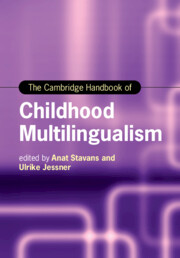Book contents
- The Cambridge Handbook of Childhood Multilingualism
- Cambridge Handbooks in Language and Linguistics
- The Cambridge Handbook of Childhood Multilingualism
- Copyright page
- Contents
- Figures
- Tables
- About the Editors
- Contributors
- Acknowledgments
- Multilingualism Is Not Bilingualism +1: An Introduction
- Part One Becoming and Being a Multilingual Child
- Part Two Cognition and Faculties in Multilinguals
- Part Three Family Language Policy
- 11 Establishing and Maintaining a Multilingual Family Language Policy
- 12 Parental Input in the Development of Children’s Multilingualism
- 13 Multilingualism, Emotion, and Affect
- 14 Siblings’ Multilingual Discourse
- Part Four Language(s) and Literacy of Multilingual Children through Schooling
- Part Five Socialization in Childhood Multilingualism
- Part Six Multilingual Children’s Landscape
- Subject Index
- Country Index
- Language Index
- References
13 - Multilingualism, Emotion, and Affect
from Part Three - Family Language Policy
Published online by Cambridge University Press: 18 August 2022
- The Cambridge Handbook of Childhood Multilingualism
- Cambridge Handbooks in Language and Linguistics
- The Cambridge Handbook of Childhood Multilingualism
- Copyright page
- Contents
- Figures
- Tables
- About the Editors
- Contributors
- Acknowledgments
- Multilingualism Is Not Bilingualism +1: An Introduction
- Part One Becoming and Being a Multilingual Child
- Part Two Cognition and Faculties in Multilinguals
- Part Three Family Language Policy
- 11 Establishing and Maintaining a Multilingual Family Language Policy
- 12 Parental Input in the Development of Children’s Multilingualism
- 13 Multilingualism, Emotion, and Affect
- 14 Siblings’ Multilingual Discourse
- Part Four Language(s) and Literacy of Multilingual Children through Schooling
- Part Five Socialization in Childhood Multilingualism
- Part Six Multilingual Children’s Landscape
- Subject Index
- Country Index
- Language Index
- References
Summary
Much of the scholarly literature in second language acquisition relates language development with different cognitive, sociocultural, and linguistic factors, but little research relates second language acquisition to affect. This paucity of research is especially relevant in the case of immigrant populations, for whom there is a possibility of discontinuity of affective ties referent to their extended families left in the native land. In this chapter we aim to understand interconnections between the development of multilingualism and biliteracy for young children who are first-generation Americans, and the composition of digital picture books to evoke affective experiences relative to remote eco-social environments.
- Type
- Chapter
- Information
- The Cambridge Handbook of Childhood Multilingualism , pp. 304 - 324Publisher: Cambridge University PressPrint publication year: 2022

